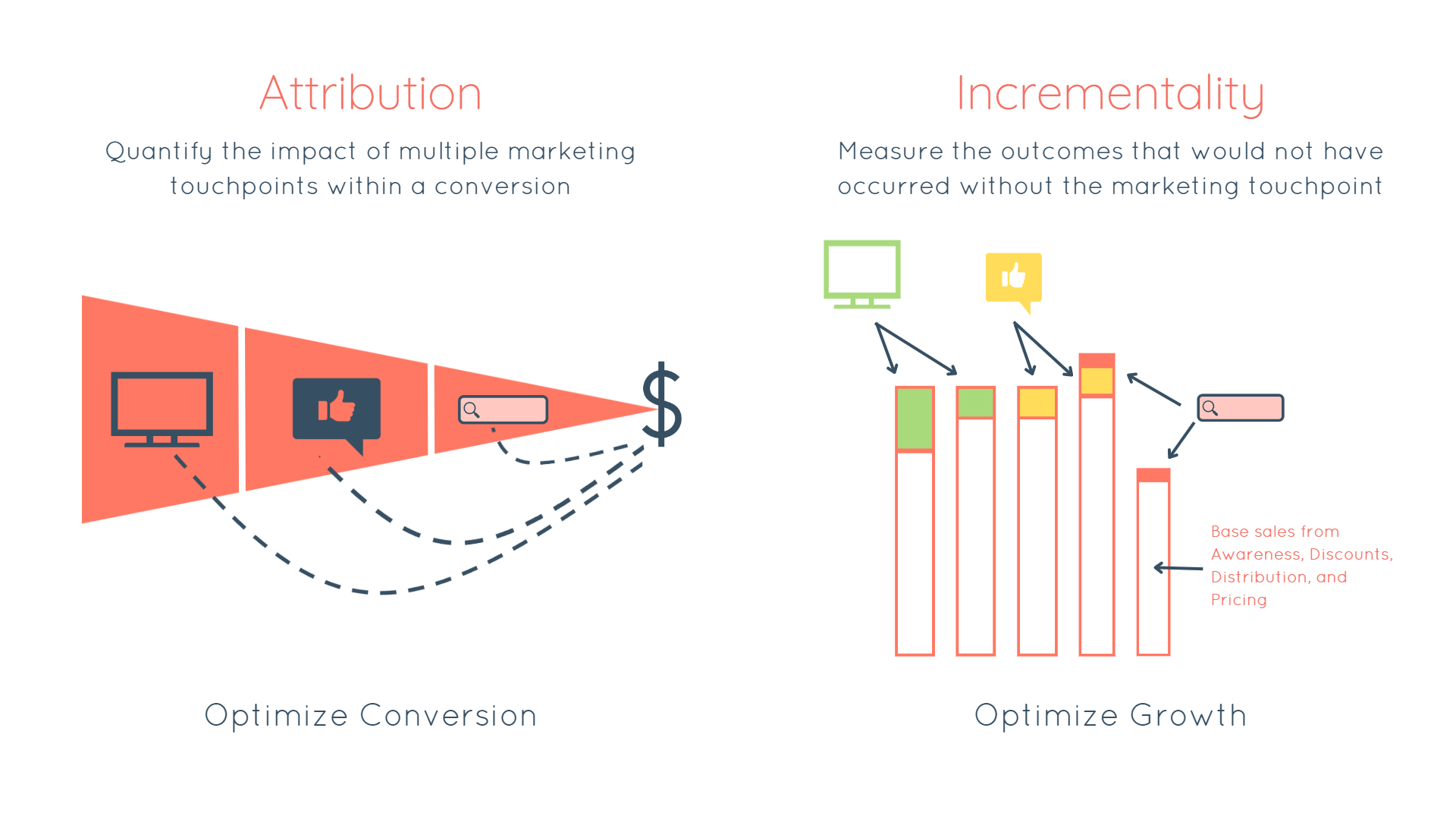Measuring the impact of marketing efforts is a critical component of any business’s success. However, there are different approaches to measuring this impact, with some key differences between them. Two of the most common approaches are attribution and incrementality.
Attribution is a methodology that quantifies the impact of multiple marketing touchpoints within a conversion. It seeks to assign credit to each touchpoint based on its contribution to the conversion. While attribution can be a useful tool for understanding the customer journey and optimizing marketing campaigns, it has some limitations. For example, it does not account for the impact of touchpoints that did not result in a conversion, and it may overemphasize the impact of touchpoints that occur later in the customer journey.
Incrementality, on the other hand, is a methodology that seeks to measure the outcomes that would not have occurred without the marketing touchpoint. It goes beyond attribution to measure the true impact of marketing efforts on business outcomes. By comparing the outcomes of a group that received the marketing touchpoint to a control group that did not, incrementality can provide a more accurate picture of the impact of marketing efforts.

How Incrementality Works
Incrementality works by comparing the outcomes of a group that received the marketing touchpoint to a control group that did not. This allows businesses to measure the true impact of the marketing touchpoint, by isolating the effect of the touchpoint from other factors that may be influencing the outcome.
For example, a business might run a Facebook ad campaign to promote a new product. To measure the incrementality of the campaign, they would divide their target audience into two groups – one that receives the Facebook ad and one that does not. They would then measure the outcomes of both groups – for example, the number of purchases made by each group – and compare them. By comparing the outcomes of the two groups, the business can determine the true impact of the Facebook ad campaign on sales.
Benefits of Incrementality
There are several benefits to using incrementality as a methodology for measuring the impact of marketing efforts. First, it provides a more accurate picture of the impact of marketing efforts than attribution, by isolating the effect of the marketing touchpoint from other factors that may be influencing the outcome. Second, it allows businesses to optimize their marketing efforts more effectively, by identifying the touchpoints that have the greatest impact on business outcomes. Finally, it can help businesses to allocate their marketing resources more effectively, by focusing on the touchpoints that provide the greatest incremental impact.
Incrementality is a powerful tool for businesses looking to measure the impact of their marketing efforts. By going beyond attribution to measure the true impact of marketing touchpoints, incrementality can provide a more accurate picture of the effectiveness of marketing campaigns. With a data-driven approach to marketing measurement, businesses can make informed decisions and optimize their marketing efforts for maximum impact.